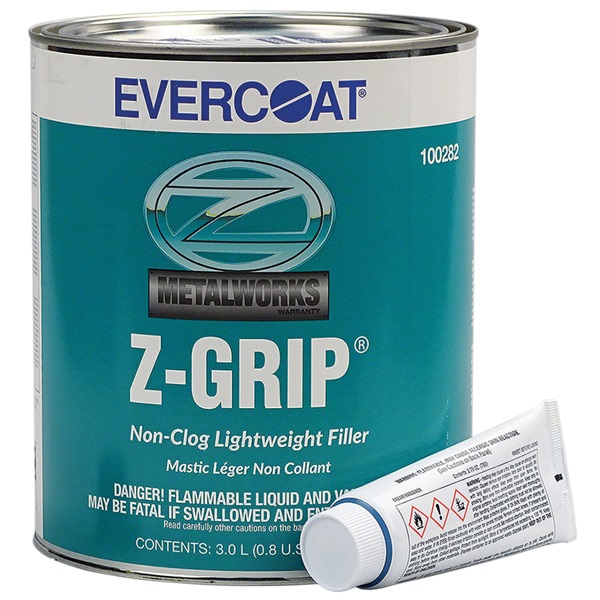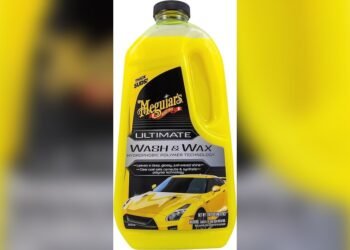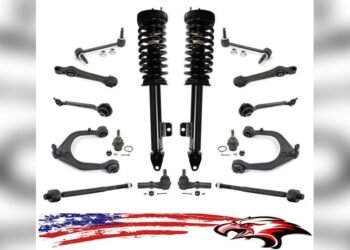When it comes to fixing dents and imperfections on your vehicle, choosing the right body filler can make all the difference. You might have heard about Bondo and Evercoat, two popular options that promise smooth, durable results.
But which one truly fits your needs? Whether you’re a seasoned pro or tackling a DIY project for the first time, understanding how Bondo and Evercoat compare will help you save time, money, and frustration. Keep reading to discover which body filler works best for your repairs and why picking the right product matters more than you think.

Credit: www.tptools.com
Bondo And Evercoat Basics
Bondo and Evercoat are two popular names in the world of auto body repair. Both brands offer products to fix dents, holes, and imperfections on vehicle surfaces. Understanding their basics helps choose the right filler for each job. This section covers their origins and main product lines.
Origins And Brand Backgrounds
Bondo was introduced in the 1950s by 3M. It quickly became famous for easy-to-use body fillers. Bondo products aimed at both professionals and DIYers. The brand focused on durability and quick repairs.
Evercoat started as a part of the PPG Industries family. It has a long history of producing high-quality body fillers. Evercoat targets professional auto body shops. Its reputation is built on strong, reliable repair materials.
Core Product Lines
Bondo offers a wide range of polyester body fillers. These include quick-dry fillers and lightweight options. The brand also provides spot putty and glazing compounds for smooth finishes.
Evercoat’s lineup includes heavy-duty fillers reinforced with fiberglass strands. It also offers finishing glazes and special repair compounds. These products are designed for tougher repairs and long-lasting results.
Material Composition
Understanding the material composition of Bondo and Evercoat helps choose the right body filler. Both brands offer polyester-based fillers but differ in reinforcement and additives. These differences affect strength, ease of use, and finish quality.
Polyester Vs. Fiberglass Reinforcement
Bondo mainly uses polyester resin as its base. It provides good flexibility and easy sanding. Some Bondo products include fiberglass strands for added strength. Fiberglass reinforcement helps in structural repairs and filling larger holes.
Evercoat also uses polyester resin but offers more options with fiberglass reinforcement. Their fillers with fiberglass are stronger and resist cracking better. This makes Evercoat suitable for heavy-duty repairs or areas under stress.
Additives And Fillers
Bondo includes fillers that improve sanding and reduce pinholes. These additives help the product dry quickly and create a smooth surface. Bondo’s formula is designed for quick repairs and easy shaping.
Evercoat uses special fillers and additives to enhance adhesion and durability. Some Evercoat products contain extra agents to resist shrinkage and improve hardness. These features help achieve a longer-lasting finish.
Performance In Auto Repair
Choosing the right body filler affects the outcome of your auto repair project. Performance plays a big role in how well the repair holds and looks. Both Bondo and Evercoat offer solid options, but their strengths differ. Understanding their performance helps in making a smart choice.
Adhesion And Durability
Bondo sticks well to many surfaces, including metal and fiberglass. It offers strong adhesion for most repairs. Evercoat also bonds tightly and lasts long under stress. Its fiberglass-reinforced fillers add extra strength. Both resist cracking, but Evercoat tends to hold up better in harsh conditions.
Sanding And Finishing Qualities
Bondo sands smoothly and shapes easily. It works well for both small and large repairs. Evercoat provides a finer finish with less effort. Its premium fillers create fewer pinholes and require less sanding. This helps speed up the finishing process and reduces dust.
Drying And Curing Times
Bondo cures quickly, often within 20 to 30 minutes. This allows faster progress on repairs. Evercoat may take a bit longer, depending on the product type. Some Evercoat fillers need up to an hour to fully cure. The longer cure time can improve strength but may slow the workflow.
Application Techniques
Applying body filler correctly is crucial for a strong, smooth repair. Both Bondo and Evercoat require precise techniques to work well. Knowing how to mix and apply them affects the final finish and durability. Below, learn simple tips to help you get the best results with either product.
Mixing Ratios And Tips
Bondo and Evercoat need a hardener mixed in before use. The common ratio is about 2% hardener to filler. This means a small pea-sized amount of hardener for a golf ball-sized filler. Too much hardener makes the mix dry too fast and crack.
Mix the filler and hardener on a flat, clean surface. Use a plastic spreader to blend them thoroughly. The color should be uniform with no streaks. Work quickly, as the filler starts to harden within minutes.
Best Practices For Smooth Results
Apply the mixed filler in thin layers. Press it firmly into dents or holes. Avoid thick blobs that take longer to dry and sand. Let each layer cure before adding another for a strong bond.
After curing, sand the filler with medium-grit paper. Smooth out rough edges and shape the repair. Finish with fine-grit sandpaper for a clean, even surface. Clean dust off before painting or priming.
Use Cases And Suitability
Choosing the right body filler depends on the repair type and project scope. Bondo and Evercoat serve different needs. Understanding their use cases helps in picking the best option for your work. Below, explore where each product fits best.
Small Repairs Vs. Structural Fixes
Bondo is ideal for small repairs like dents and scratches. It spreads easily and sands smoothly. Evercoat offers stronger fillers for structural fixes. Its fiberglass-reinforced versions provide extra strength. Use Evercoat for holes or areas needing more support. For minor surface blemishes, Bondo works well and dries fast.
Professional Vs. Diy Projects
Bondo suits DIY enthusiasts due to its ease of use. It requires minimal tools and skills to apply. Evercoat targets professionals needing durable, heavy-duty fillers. It performs well in demanding repairs and body shops. Professionals choose Evercoat for longer-lasting results. DIYers often prefer Bondo for quick fixes and home projects.
Common Issues And Limitations
Both Bondo and Evercoat are popular choices for auto body repairs. Each product has strengths but also some common issues and limitations. Knowing these helps to choose the right filler for your project. Understanding these problems can save time and improve results.
Pinholes And Surface Imperfections
Pinholes often appear after sanding the filler. They are tiny holes that spoil the smooth finish. Both Bondo and Evercoat can develop pinholes if applied too thickly or mixed incorrectly. Surface imperfections might happen if the filler is not spread evenly. These flaws require extra sanding and sometimes a second coat.
Using a proper mixing ratio and thin layers reduces pinholes. Sanding between coats helps create a better surface. Careful application ensures a smooth and durable repair.
Temperature And Environmental Impact
Temperature affects how Bondo and Evercoat cure. Cold weather slows down the hardening process. Hot temperatures make the filler cure too fast, which can cause cracking. Both products work best in moderate temperatures.
Humidity also plays a role. High moisture can weaken the filler’s bond to the surface. Dust and dirt in the environment may stick to the filler while drying. Working in a clean, dry area gives the best results.
Cost And Availability
Cost and availability are key factors in choosing between Bondo and Evercoat. Both products serve the same purpose but differ in price and where you can find them. Understanding these differences helps you pick the right option for your project.
Price Comparison
Bondo tends to be less expensive than Evercoat. A typical Bondo kit costs around $15 to $25. Evercoat products usually range from $20 to $35 per kit. The price gap reflects differences in formula and brand reputation. Bulk purchases or larger sizes may offer better value. For small repairs, Bondo is often the budget-friendly choice. Professionals may prefer Evercoat for its premium quality despite the higher cost.
Where To Buy In Austin, Texas
Both Bondo and Evercoat are widely available in Austin. Major hardware stores like Home Depot and Lowe’s carry these brands. Local auto parts shops also stock them. Online retailers such as Amazon provide convenient options with fast shipping. Specialty auto body supply stores in Austin often have a wider selection. Check store websites for stock updates before visiting. Availability may vary depending on product demand and season.

Credit: www.youtube.com
Alternatives To Bondo And Evercoat
Alternatives to Bondo and Evercoat offer various options for auto body repairs and other projects. These substitutes provide different strengths, drying times, and application methods. Choosing the right filler depends on the repair type and material involved.
Epoxy And Water Putty
Epoxy is a strong adhesive and filler. It bonds well to metal, wood, and plastic. Epoxy is resistant to moisture and chemicals, making it ideal for outdoor repairs. It cures hard and can be sanded smooth.
Water putty is a powder mixed with water. It forms a hard, durable filler. It works well on wood, plaster, and metal. Once dry, it can be drilled, sanded, or painted. Water putty is easy to use and non-toxic.
Body Solder And Metal Fillers
Body solder is a traditional filler made from tin or lead alloys. It melts and bonds directly to metal surfaces. It creates a smooth, strong repair ideal for car panels. Body solder requires heating tools and skill to apply.
Metal fillers are modern alternatives to body solder. They contain metal particles for strength and durability. These fillers stick well to metal and resist cracking. Metal fillers are easier to use than body solder and dry faster.
User Reviews And Community Feedback
User reviews and community feedback offer valuable insights into how Bondo and Evercoat perform in real-world use. Both products have loyal user bases that share honest opinions online. These opinions help identify strengths and weaknesses from different perspectives.
Understanding the experiences of professionals and DIY enthusiasts provides a well-rounded view. It highlights how each product handles various repair tasks and user expectations.
Professional Opinions
Auto body experts often praise Evercoat for its smooth finish and durability. Many find it easier to sand and shape, leading to better final results. Professionals appreciate its strong adhesion and resistance to cracking.
Bondo receives mixed feedback from professionals. Some mention it as a reliable filler for quick repairs. Others note it may shrink or crack over time if not applied correctly. Many experts recommend Evercoat for larger or structural jobs.
Diy Enthusiast Experiences
DIY users like Bondo for its affordability and wide availability. Beginners find it simple to apply and fast drying. Some users report occasional pinholes and sanding challenges but consider it good for small projects.
Evercoat is favored by DIYers aiming for a more professional look. It requires careful mixing but results in fewer imperfections. Some find it less forgiving for beginners but worth the effort for better finishes.

Credit: www.amazon.com
Choosing The Right Filler
Choosing the right filler is key to a successful repair. The filler must match the needs of your project. It should also work well with the materials involved. Picking the proper product saves time and improves results. Two popular choices are Bondo and Evercoat. Each has strengths and fits different uses.
Project Requirements
Consider the size and type of damage first. Small dents need a smooth, easy-to-sand filler. Large holes or structural damage require stronger, reinforced fillers. Some fillers dry faster, helping speed up the job. Others offer longer working time for detailed shaping. Choose a filler that suits the repair’s scale and speed needs.
Material Compatibility
Check if the filler bonds well with the surface material. Bondo works well on metals, fiberglass, and wood. Evercoat offers specialized formulas for different substrates. Some fillers resist moisture better, ideal for outdoor use. Using compatible filler prevents cracking or peeling later. Always match the filler to the material for lasting repairs.
Frequently Asked Questions
What Is Better Than Bondo?
Evercoat offers stronger, easier-to-sand fillers with fewer pinholes than Bondo. Epoxy and fiberglass fillers suit heavy repairs better. Choose based on project needs.
Is Evercoat Body Filler Good?
Yes, Evercoat body filler offers strong adhesion, easy sanding, and durable repairs. Professionals often prefer it for quality results.
Which Body Filler Is Best?
Evercoat and Bondo are top body fillers. Evercoat offers superior strength and smooth finish. Bondo is easy to use and affordable. Choose Evercoat for professional repairs and Bondo for quick, small fixes. Both work well; select based on project needs and skill level.
When Should You Not Use Bondo?
Do not use Bondo on wet, oily, or rusty surfaces. Avoid it for structural repairs or flexible materials. It’s unsuitable for large holes or areas exposed to moisture. Choose specialized fillers for metal or fiberglass repairs instead.
What Is The Main Difference Between Bondo And Evercoat?
Bondo cures faster, while Evercoat offers smoother finishes and less shrinkage.
Conclusion
Both Bondo and Evercoat offer reliable body filler options for repairs. Bondo suits quick fixes and small jobs with easy application. Evercoat works well for larger repairs needing extra strength and durability. Choose based on your project size and material.
Each product has unique features to match different needs. Testing a small area first helps ensure the best results. Your repair will look smooth and last longer with the right choice. Keep tools ready and follow instructions carefully for a clean finish.

















